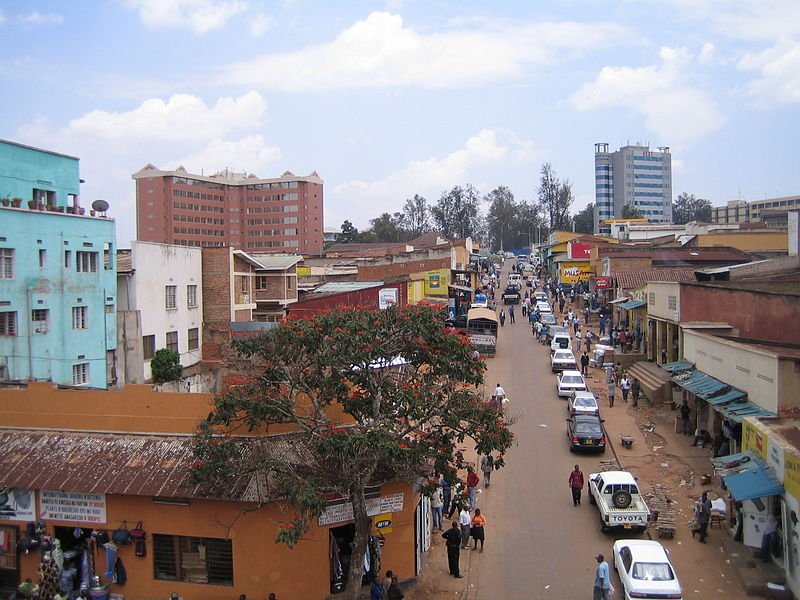Kigali is the capital and biggest city in Rwanda. Located at the geographical heart of the country, at an elevation of 1,567 m (5,141 ft), Kigali covers 720 sq km (280 sq mi) and has a population of approximately one million people (2012 estimate).
Kigali was founded in 1907, when Rwanda was still a colony of Germany. Before independence, various towns and villages were possible choices for capital. They include Nyanza, where the tribal rulers resided, and Butare (formerly known as Astrida), which was the colonial capital of German East Africa. It was initially considered for the position of capital of the independent Rwanda, but eventually the position was given to Kigali, due to its centralized location.
Kigali was the scene of the Rwandan Genocide, where Hutu militias, aided by various members of the Rwandan army, slaughtered around one million people, mostly Tutsi but also some moderate Hutus. The Tutsi-dominated Rwandese Patriotic Front retaliated, resulting in heavy fighting the pitted the two main ethic groups of the country.
Today the city of Kigali is once again at peace, though its infrastructure was severely damaged and is still in the process of healing.
 View of Kigali, Rwanda
View of Kigali, RwandaSource: https://commons.wikimedia.org/wiki/File:CentralKigali.jpg
Author: SteveRwanda

 A Kigali minibus
A Kigali minibusSource: https://commons.wikimedia.org/wiki/File:Minibus_in_Kigali.jpg
Author: Fanny Schertzer

Visiting Kigali
The Kigali International Airport (KGL) receives flights from Addis Ababa, Amsterdam, Brazzaville, Brussels, Bujumbura, Cyangugu, Dar es Salaam, Doha, Dubai, Entebbe, Istanbul, Johannesburg and Nairobi.Places of Interest in Kigali
- Kigali Genocide Memorial Centre
- Kigali Tower
- Presidential Palace Museum
 Latest updates on Penang Travel Tips
Latest updates on Penang Travel Tips

Copyright © 2003-2025 Timothy Tye. All Rights Reserved.

 Go Back
Go Back